10 Shocking Distracted Driving Facts & Statistics in Australia: 2025 Update
-

- Last updated:
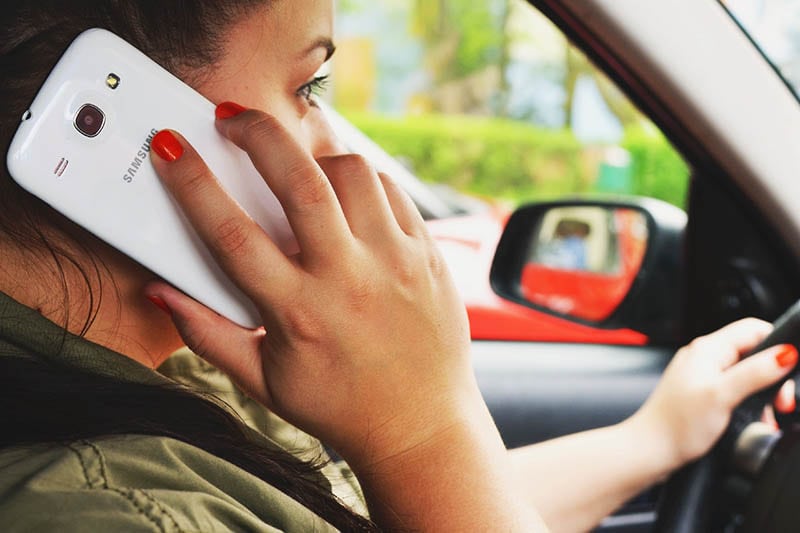
Distracted driving is a common occurrence and the leading cause of avoidable traffic collisions in Australia. It only takes a few seconds to travel several car lengths and cause a life-altering accident, but that doesn’t stop many drivers from glancing at their phones, searching through the glove box, or shifting their attention while on the road.
Recognizing the issue, Australia’s state governments have cracked down on distracted driving in recent years, employing new technology and policies to prevent incidents. For drivers, a little perspective can help you consider your personal driving habits and find areas for improvement. Let us explore how well drivers stay focused on the road with this breakdown of distracted driving facts and statistics in Australia.
Click below to jump ahead:
- Distracted Driving in Australia
- Distracted Driving Causes
- Distracted Driving By State
- Distracted Driving Demographics
The 10 Distracted Driving Statistics in Australia
- Distracted driving is the cause of roughly 16% of serious casualty road crashes in Australia.
- Australian drivers engage in secondary tasks every 96 seconds while driving.
- Consuming food and drinks are the most common driving distractions in Australia.
- At least 60% of Australian drivers have used a mobile phone that wasn’t hands-free while on the road.
- Cell phones are responsible for most safety-related incidents.
- Tasmanian drivers are the most comfortable using cell phones on the road.
- New South Wales drivers received over 62,400 citations for mobile phone use in 2019–2020.
- There are roughly 29 road deaths from distracted driving every year in Queensland.
- Over 20% of young drivers are comfortable using cell phones behind the wheel.
- Individuals over 45 are much less likely to be distracted while driving.
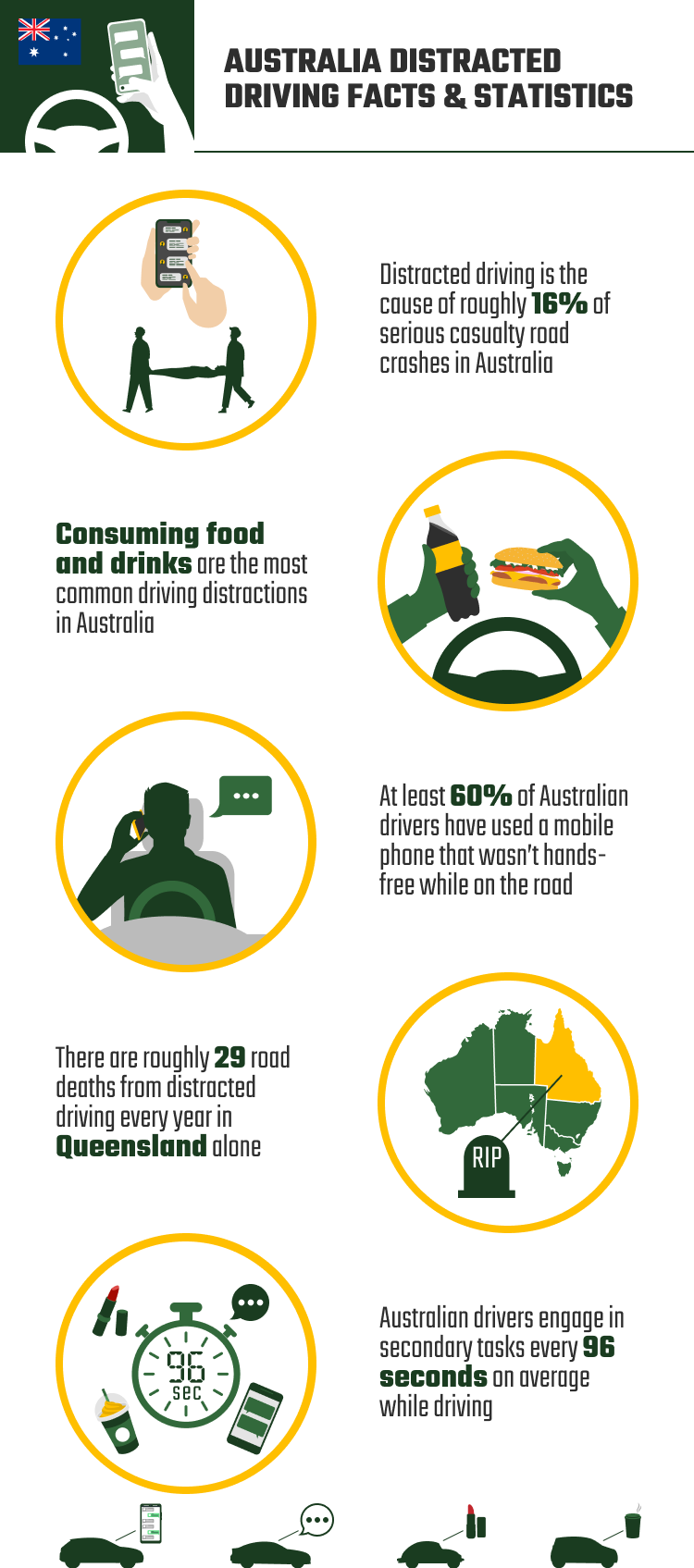
Distracted Driving in Australia
1. Distracted driving is the cause of roughly 16% of serious casualty road crashes in Australia.
(Australian Automobile Association)
While speeding and impaired driving each account for roughly one-third of traffic accidents in Australia, distracted driving contributes to plenty of severe incidents every year. According to Acorn Rentals, 22% of car crashes and up to 71% of trucking accidents result from distraction. Among near-misses, nearly half were due to an inattentive driver.
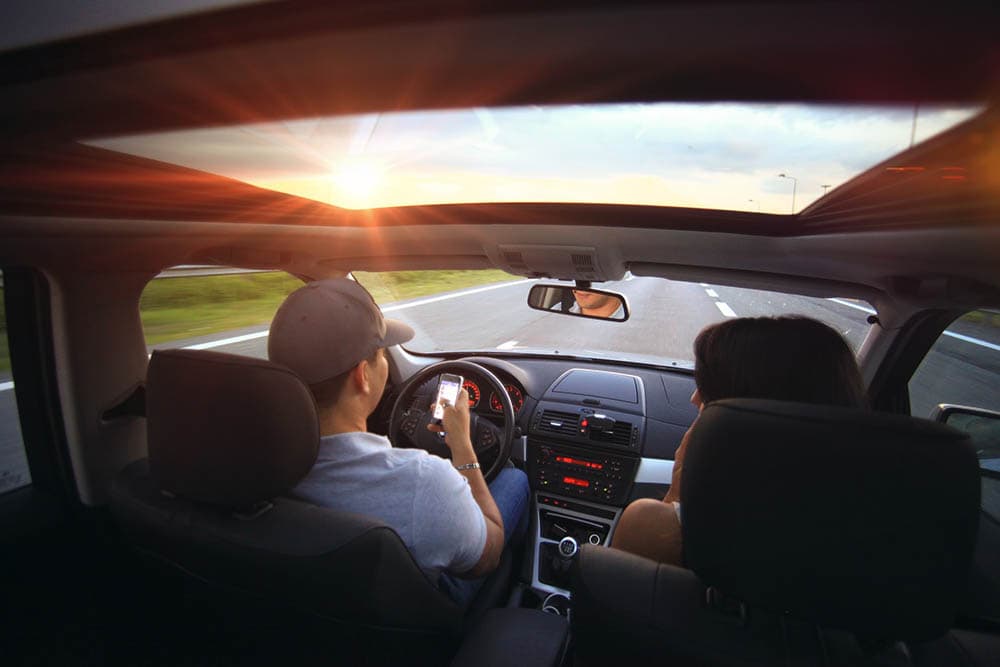
2. Australian drivers engage in secondary tasks every 96 seconds while driving.
(Journal of the Australasian College of Road Safety)
Data from the Australian Naturalistic Driving Study (ANDS) reveals that Australian drivers let their attention drift roughly once every minute and a half. Distracted driving can result from various secondary tasks or activities that don’t maintain control of the car. These can include:
- Texting or emailing
- Adjusting the radio
- Talking to passengers
- Looking at objects inside and outside the vehicle
- Eating or drinking
While drivers engage in distracting behavior every 96 seconds, there is some self-regulation for safety purposes. On average, drivers only do a task every 107 seconds while in motion and every 68 seconds when the car is stationary. Mobile phone use accounted for 7.4% of secondary tasks, and drivers used them for much shorter periods while driving versus sitting at a traffic stop.
However, according to the ANDS, drivers do little else to mitigate the chance of an accident. Over 82% of drivers in the study used handheld phones rather than hands-free devices. Meanwhile, reaching for an object occurred over 7% of the time, and drivers were more likely to perform this high-risk maneuver while in motion.
Distracted Driving Causes
3. Consuming food and drinks are the most common driving distractions in Australia.
(Murphy’s Law)
Cell phones may get the most focus from law enforcement and public awareness campaigns, but they aren’t the biggest attention hog in the car. Rather than fiddling with a smartphone, more drivers are worried about handling their hot food and drinks while out on the road.
A survey from Murphy’s Law Accident Lawyers revealed that 36.5% of Australians had recently eaten while driving, and nearly 40% of 18–34-year-olds were guilty of doing so. Eating was more prevalent than driving while angry or zoning out and almost three times more common than handheld cell phone use.
The survey’s findings agreed with opinions surrounding distractions. Eating and drinking ranked low on the list of actions Australians felt most distracting in Budget Direct’s 2022 driver survey. Only 3.9% of respondents felt consuming food and drinks was the most distracting activity on the road while texting sat at the top of the list, with 53.3% of drivers finding it more attention-stealing than anything else.
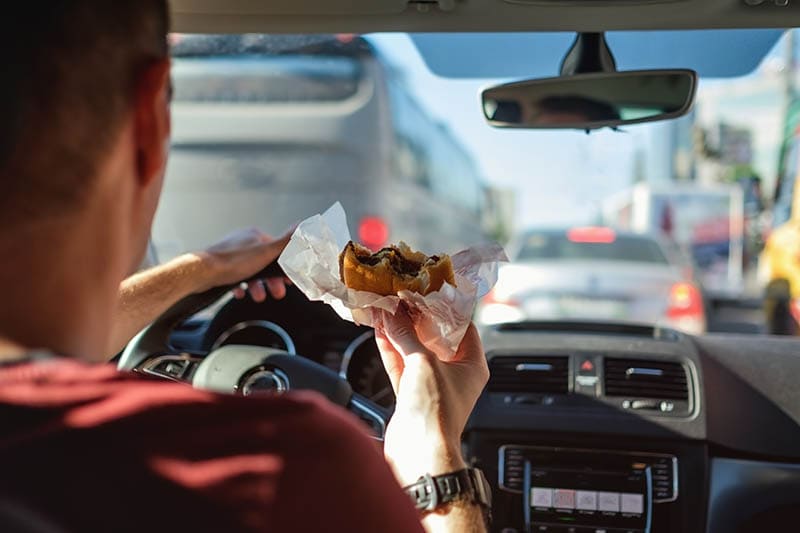
4. At least 60% of Australian drivers have used a mobile phone that wasn’t hands-free while on the road.
(Budget Direct)
Only 11.8% of Australians in Budget Direct’s 2022 survey felt comfortable using their cell phones while driving, showing a decrease from 2021, when 16.4% of respondents stated they were comfortable using devices on the road. No matter the situation, 62% of Australians feel cell phones are never okay to use behind the wheel.
But despite the apparent awareness of the dangers, most Australian drivers can’t resist laying hands on their cell phones. Around 60% of survey respondents stated they used a mobile phone while driving, with 89% using them to make calls, 68% using navigation features, and 39% sending and receiving texts.
5. Cell phones are responsible for most safety-related incidents.
(Journal of the Australasian College of Roady Safety)
Despite the frequency of engaging in secondary tasks while on the road, only 5.9% of drivers studied in the ANDS had a driving incident while distracted. Incidents include failing to indicate, hard braking, veering out of the lane, and failing to yield.
Nearly a quarter of safety-related incidents like these were due to mobile phone use. Hygiene-related tasks were responsible for another 20%, and 10.5% of incidents occurred when the driver reached for an object.
Distracted Driving By State
6. Tasmanian drivers are the most comfortable using cell phones on the road.
(Budget Direct)
Australians are generally uncomfortable using cell phones on the road, but some states appear to be more relaxed than others. In Tasmania, 16.7% of drivers acknowledge being comfortable using cell phones. On the other end of the spectrum, South Australians were the most hesitant to pull out their phones, at only 6.2%.
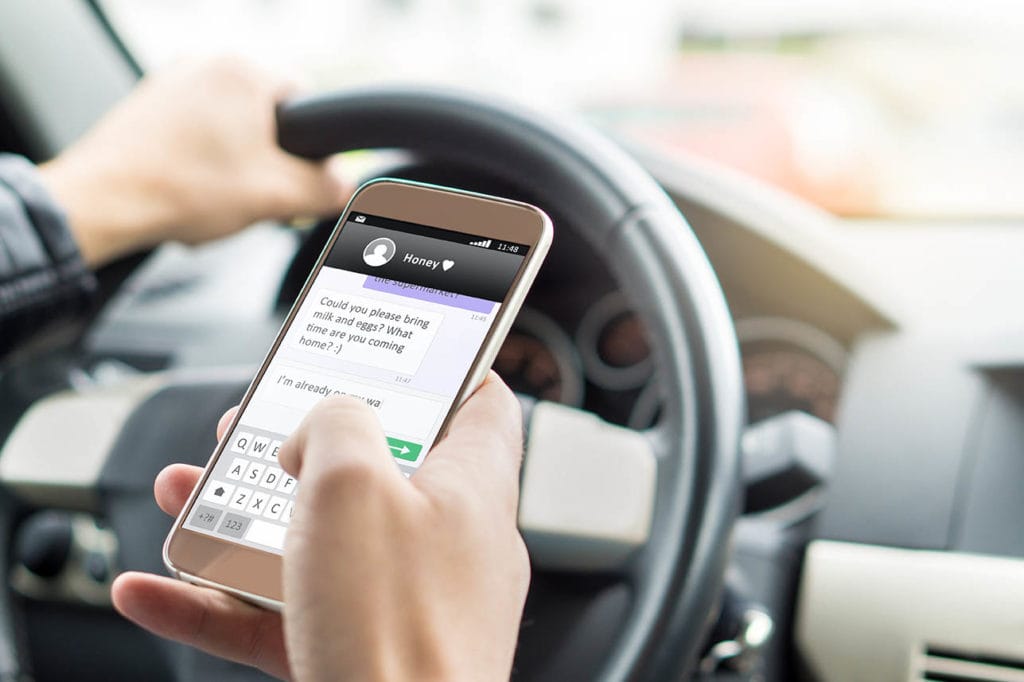
7. New South Wales drivers received over 62,400 citations for mobile phone use in 2019–2020.
(NSW Government)
New South Wales drivers claim to be among the safest in the nation according to a survey by Finder, but that doesn’t stop them from getting their fair share of tickets for illegal phone use. Drivers across Australia’s most populated state received over 62,400 tickets for using handheld mobile phones between July 2019 and June 2020.
New mobile phone-tracking traffic cameras could cause the annual ticket count in New South Wales to increase even further. If it does, it will join mobile phone-related casualties as part of an unfortunate upward trend in the state.
Data from 2008 to 2015 showed that serious injuries due to mobile phone-related crashes reached a low of three in 2009 and peaked at 13 in 2015. Nine deaths occurred in phone-related accidents between 2008 and 2016. But while the injury rate stayed relatively level in ensuing years, the number of fatalities in phone-related crashes jumped to 13 from 2017 to 2021, nearly triple the 2008–2016 annual rate.
8. There are roughly 29 road deaths from distracted driving every year in Queensland.
(Queensland Government)
Although Queensland doesn’t boast a population to rival New South Wales, its distracted driving numbers certainly keep up.
According to the Queensland government, the state averages 29 deaths and 1,284 serious injuries from distracted drivers annually. By comparison, New South Wales reported only 27 distracted driving fatalities in 2020 and 1,072 total casualties despite having over 1.5 million more registered vehicles on the road.
Distracted Driving Demographics
9. Over 20% of young drivers are comfortable using cell phones behind the wheel.
(Budget Direct)
Mobile phone-related crashes are far more common among young people in Australia, and it’s primarily due to higher usage. Over 20% of drivers aged 18–34 feel comfortable using phones, but numbers drop dramatically among older age groups. The next highest group was the 35–44-year-old demographic at 11.9%. At 7.4%, drivers in the 55–64 age group were the least comfortable with using their phones.

10. Individuals over 45 are much less likely to be distracted while driving.
(Murphy’s Law)
Phones aren’t the only reason young Australians lose their attention on the road. The study from Murphy’s Law found young drivers were more likely to engage in several types of dangerous behavior than drivers over 45. Although 32.5% were still likely to eat or drink while driving, older individuals reported far fewer instances of zoning out, driving angry, and getting distracted by passengers.
Frequently Asked Questions
What Are the Penalties for Distracted Driving in Australia?
Using a handheld mobile phone while driving is illegal in every Australian state and territory. Penalties vary by location, as shown in the following breakdown.
| Fine | Demerit Point | |
| New South Wales | $362 | 5 |
| Victoria | $545 | 4 |
| Queensland | $1,078 | 4 |
| Western Australia | $1,000 | 4 |
| South Australia | $659 | 3 |
| Tasmania | $346 | 3 |
| Northern Territory | $500 | 3 |
| Australian Capital Territory | $598 | 4 |
The specific activity may affect your punishment. States generally deliver lighter punishment for making and receiving phone calls than they do for texting, emailing, or engaging in social media. Multiple offenses can lead to double demerit points and heavier fines in many areas.
Are the Rules for Distracted Driving the Same for Everyone?
States are generally stricter on young drivers than those with full or open licenses. A single offense can be enough to lose a learner or provisional license, and there’s less leniency on how much mobile phone use is allowed. For instance, open or P2 drivers in Queensland can use hands-free controls while driving, but drivers with learner or P1 licenses can’t use phones in any situation.
Each state has different penalty categories. Most include bicyclists in their distracted driving laws, levying the same phone use penalties on them as they do car drivers.
How Is Australia Preventing Distracted Driving?
Alongside higher fines, Australia’s governments are using technology to crack down on distracted drivers. Since 2020, locales have gradually adopted fixed and portable mobile phone detection cameras in their traffic arsenals. New South Wales and Queensland already use them, with the latter already recording over 100,000 violations in only six months.
Experts hope the enhanced measures will both cut back on distracted driving and pull in more money for states. The extra citations from AI-powered cameras could provide millions in additional revenue.
Conclusion
There are plenty of distractions on the road, and they’re taking their toll on Australia’s drivers. Budget Direct reports that 30% of fatal crashes in the country stem from inattention. Novel detection technology and harsher fines will go a long way in setting examples and expectations, but the responsibility starts with each driver keeping their hands on the wheel and their eyes on the road.
Contents




